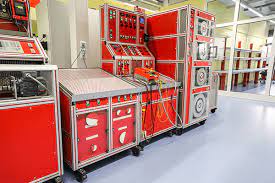You might have wondered how people with home Solar Generator For House (PV) power systems have electricity at night, or when it’s cloudy. The answer is batteries or a back-up connection to the local power grid. The solar panels on the roof, or mounted on a pole or on the ground collect energy from the sun and convert them to electricity. If you want a home solar power system that is completely independent of the local utility grid (or if you’re out where there isn’t a local utility grid) you’ll need to store the excess energy you get during sunny days in batteries.
Batteries may seem like a big expense, and nobody’s saying they’re cheap. But it is possible for them to pay for themselves in what you’d save by not being hooked up to the local power grid. Some people have both batteries and a local grid hook-up. Anyone with solar powered electricity who is hooked up to the grid has to have an automatic cut-off from the grid in case of a power failure. The reason is safety. If your PV system is cranking out power but the local wires aren’t, it could accidentally feed electricity into a line that a line worker thinks is dead.
When you have batteries to store energy from your solar power system, the energy is sent to a bank of batteries or a power inverter to convert the direct current (DC) electricity into alternating current (AC) electricity. Some solar panels have an inverter already built in, which simplifies the wiring considerably and makes it unnecessary to have a large central inverter.
In addition to a power inverter, you’ll need a charge controller. That’s because your batteries will have the longest possible life if they’re not overcharged or overdrained. When the batteries are charged fully, the controller doesn’t let any more current flow into them. When the batteries have been drained to a certain set level, the charge controllers won’t allow more current to be drained from them until they’ve undergone a recharging.
You’ll need to calculate your amp-hour requirements so you’ll know how many batteries you need. Suppose you have a 24 volt battery and standard 120 volt AC in the house. You’re powering a 3 amp load with a duty cycle of 4 hours each day. That’s a 12 amp-hour load because 3 amps x 4 hours = 12 amp-hours.
However, with a 120 volt system, you’ll need 5 of those 24 volt batteries. Multiply this by your amp-hours: 5 x 12 amp-hours = 60 amp-hours. That’s how much will be drained from your batteries. The storage capacity of a battery is usually expressed in terms of amp-hours. It is also a good idea to add about 20% to your amp-hour estimate to store power for your longest estimated period of extremely cloudy conditions.
It is important if you buy batteries that you buy deep-cycle batteries. This is a different kind of battery from your car battery, which is a shallow-cycle battery. Your car battery discharges a large amount of current in a short amount of time to start your car, and then is recharged while you drive. But batteries for a home PV array have to discharge a smaller amount of current over a longer period of time, like at night, and they’re then recharged during the day. Deep cycle batteries are the right batteries for this situation.

